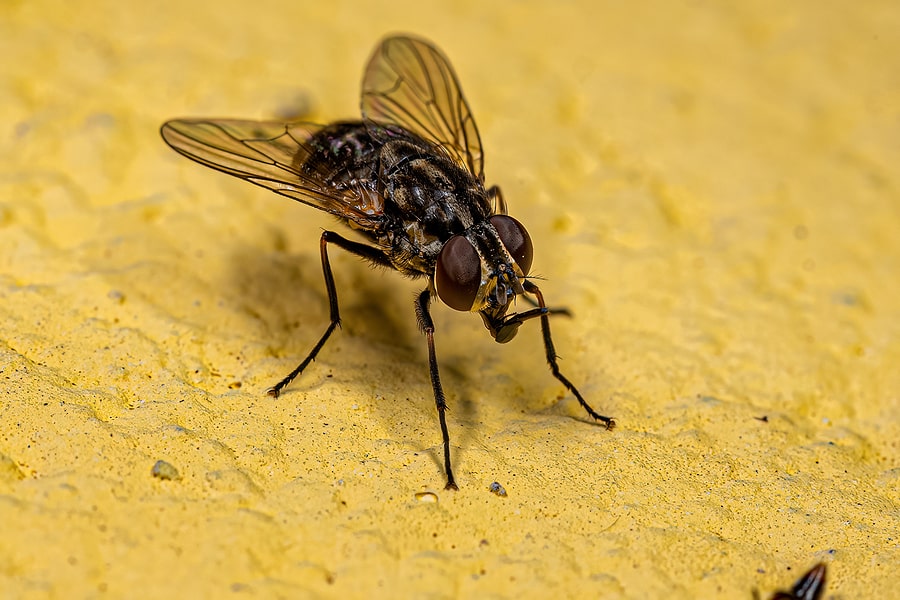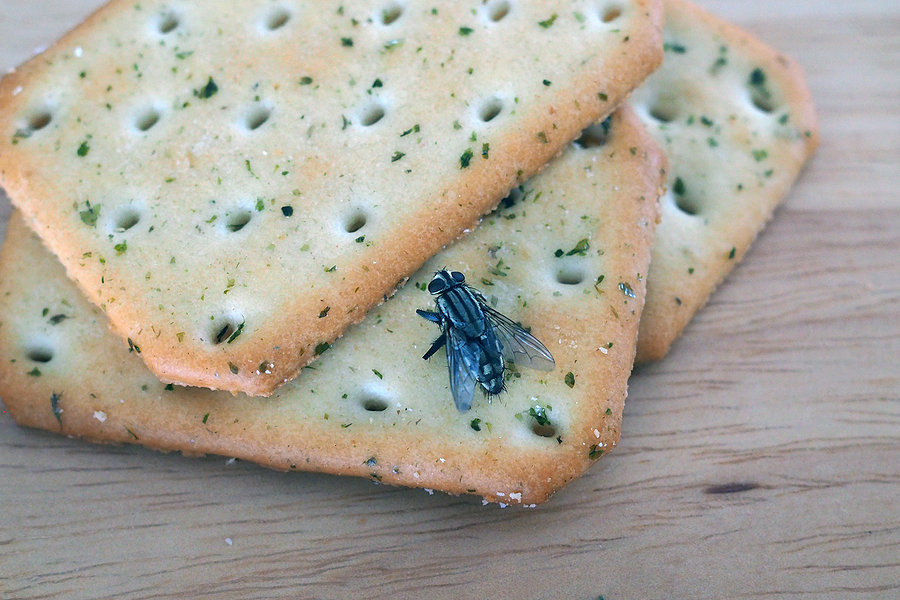READY TO GET STARTED?
REQUEST A FREE ESTIMATE
Fill out the form below or call (888) 466-7849 for a free, no-obligation estimate.

Whether inside or outside, flies can be a huge annoyance. These small pests seem to find their way back into your space after you’ve already swatted them away multiple times! At a glance, you might be able to tell what kind of fly it really is, but they can all look the same. Each type of fly has its own set of characteristics. Let’s break down the common flies you might see in your Jasper, Alabama home.
Being the most common out of all the flies, this easily identifiable pest is widespread throughout the United States. House flies can be spotted with red eyes and gray, hairy bodies. These types of flies don’t have teeth or stingers, so they feed off liquids found from human food, animal carcasses, and garbage.
While they can’t sting humans, they can spread more than 100 different pathogens including salmonellosis, typhoid, and tuberculosis. They also contaminate food surfaces by spreading diseases picked up on their legs and mouths when feeding on any trash or feces.
These oval-shaped insects are known for rapidly reproducing and can be found indoors year-round. Fruit flies are attracted to and eat rotting food; more specifically they tend to gravitate towards fruits and vegetables. They are known to breed in dark, moist areas like drains, disposals, and trashcans. They also lay around 500 eggs that can hatch in as little as 24 hours.
These pests also don’t sting or bite, but they can contaminate foods with dangerous bacteria and disease-causing pathogens.
These moth-like flies are commonly found in dark, damp conditions, like drains. Drain flies don’t bite, but their presence can aggravate asthma in some people. These household pests appear light gray to tan with a dark border around their wings.
If you have an infestation of any species of fly in your Jasper, Alabama home, then contact your local pest control company to discover a treatment and prevention plan best for you!

Flies can be considered a huge annoyance, whether you’re outside or inside the home. These pests seem to constantly find their way back to irritate you after you’ve already swatted them away a thousand times! It’s important to know that while at a glance flies can look the same, there are actually different types, each with their own set of characteristics.
House Fly
The house fly is the most common type of fly that is easily identifiable and can be found widespread throughout the United States. These pests are gray with four black stripes on their thorax with slightly hairy bodies. The house fly has red eyes that contain thousands of individual lenses that give them a wider vision. Since house flies do not have teeth or a stinger, these insects feed only off liquids found from human food, animal carcasses, and garbage.
While house flies will not sting humans, they can transfer more than 100 different pathogens including salmonellosis, typhoid, and tuberculosis. They can also contaminate food surfaces by spreading diseases picked up on their legs and mouths when feeding on any trash or feces.
Fruit Fly
Known for their ability to rapidly reproduce, fruit flies can be found indoors year-round. These insects have an oval-shaped body with six legs and antennae on their heads. These flies are attracted to and eat rotting food; more specifically they tend to gravitate towards fruits and vegetables. Fruit flies are also attracted to and will breed in dark, moist areas like drains, garbage disposals, and trashcans. They can also lay around 500 eggs that can hatch in as little as 24 hours.
While these insects won’t bite or sting, like house flies they too can contaminate foods with dangerous bacteria and disease-causing pathogens.
Horsefly
Horseflies are commonly found in both suburban and rural areas, usually near bodies of water that they use for breeding. These insects have large eyes with horizontal stripes along with their bodies. These flies are exceptionally good at flying and can travel more than 30 miles without stopping. They are most active during sunny, hot days and will typically rest on paths and roads, especially in wooded areas where they wait for potential hosts.
While male horseflies do not consume blood, female horseflies do. Female horsefly bites are rather painful since their mouthparts are used for cutting open flesh instead of sucking blood like mosquitoes. These bites are also known to cause an allergic reaction.
If you have an infestation of any species of fly, contact a professional pest control company who can provide you with the appropriate treatment and prevention plan.
House flies get their name because they’re the most common fly found in homes (genius, right?). They aren’t very adventurous creatures…usually staying within 2 miles of where they were born. Of course like with all species, you have you’re “wild ones” who have been known to go in search of food up to 20 miles away from their birthing place.
Unlike other beings that use their tongue to taste, house flies use their feet. And talk about a sweet tooth, errr sweet foot, house flies feet are 10 million times more sensitive to sugar than the human tongue. That may be “sweet” for them but it’s not so sweet for us humans. House flies have been recorded to carry over 100 kinds of disease causing germs. This can be a great threat to the health of your home. So what can you do?
Do you have problems with flies? Call a professional to inspect your property to find the source of your house fly infestation.
Source: NPMA
After doing a post on bug movies, we thought it was only appropriate to have a post about bug songs! We came up with some classic kid songs, some well-known mainstream songs, and even found some songs that we’ve never heard of before!
While coming up with songs we also came up with some band names that were based on bugs:
For more “Ticky Tunes” visit Northwest Exterminating‘s Pinterest page!
What bug themed songs or bands can you think of?
We’re all aware of the annoyance and health concerns that come along with mosquitoes. But there is a similar bug that can be just as annoying to those residents living in areas where sand is found, the sand gnat. The sand gnat (also known as sand fly or no see um) flies, bites, and sucks blood just like the mosquito. Sand gnats leave behind red, itchy bumps on the skin after they have fed off of your blood. It is not unusual for the effects of a sand gnat bite to be more intense and last for a longer period of time than a mosquito bite. Like mosquito bites, these bumps can become infected or cause a rash.
Sand gnats are a major concern to our customers living in Savannah and the surrounding areas. By being proactive, you can ensure that mosquitoes and sand gnats don’t invade your yard. Our Savannah service center offers a Green Mosquito & Sand Gnat Program to reduce the annoyance of these pests while still using the lowest environmental impact possible. To ensure that our mosquito control program is effective and environmentally friendly, we use products that are derived from flowers and bacteria.
For pest, mosquitoes, and sand gnat control in Savannah, call Northwest Exterminating. Visit us online for more information at www.callnorthwest.com.
Did you know: Sand gnats are so notorious in Savannah that the city has a minor league baseball team named after them, the Savannah Sand Gnats.